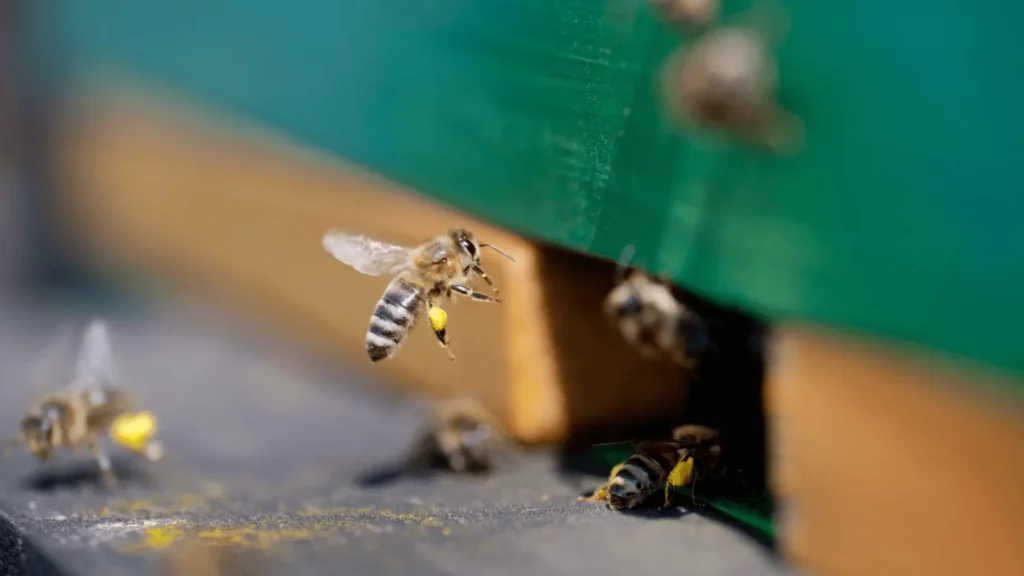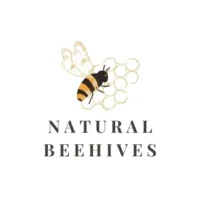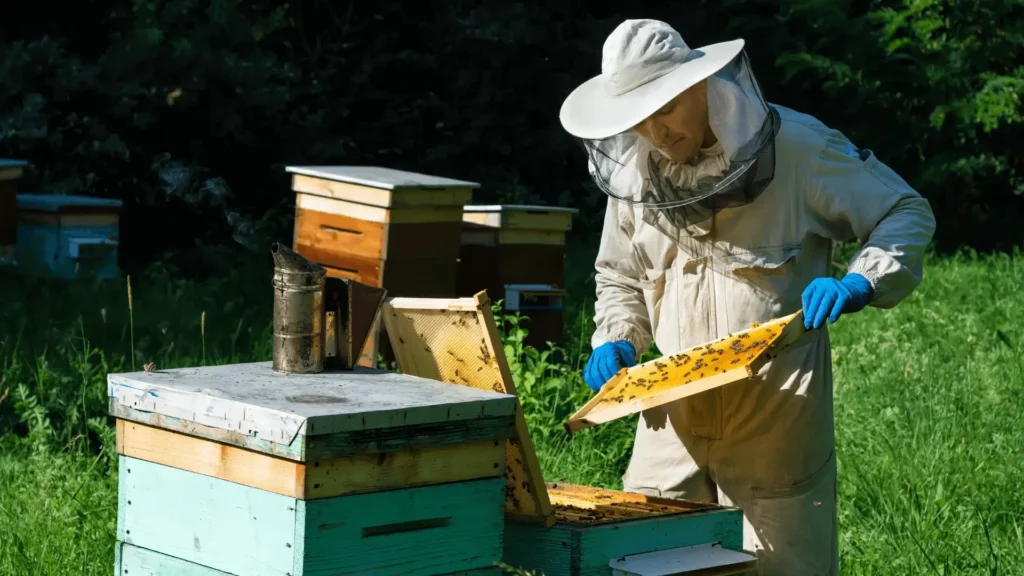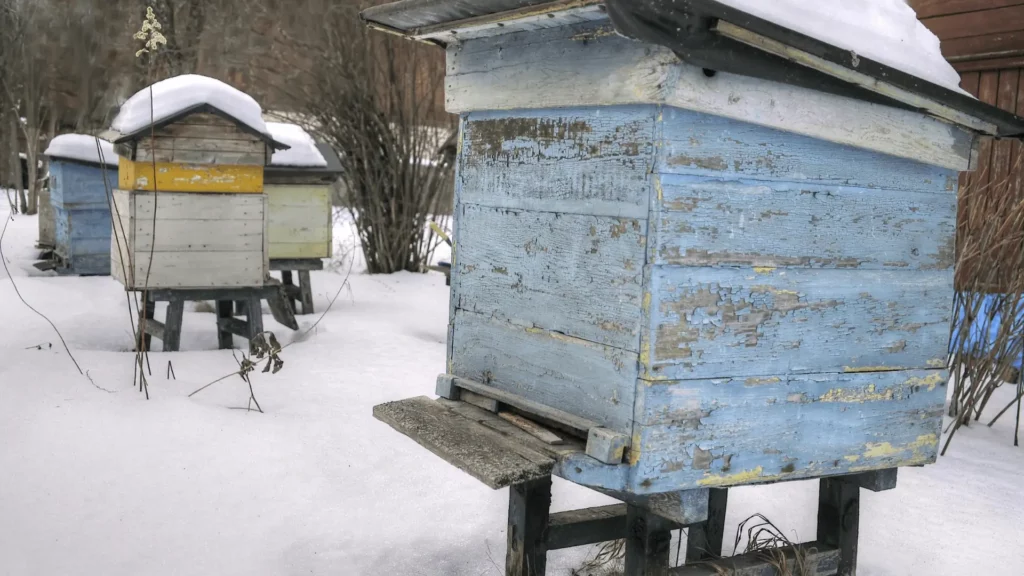
Are you interested in the fascinating world of indoor beekeeping? Imagine having the opportunity to cultivate bees indoors, regardless of external weather conditions, and enjoy year-round production of honey. Indoor beekeeping offers a wealth of benefits for bee enthusiasts, providing a controlled environment for bee health and colony productivity.
In this article, we will dive into the process, setup, and benefits of mastering indoor beekeeping. We’ll explore how to create the optimal hive environment, including factors like hive temperature, proper ventilation, and optimal humidity levels. By understanding the distinct advantages of indoor beekeeping and implementing sustainable practices, you can ensure the conservation of these vital pollinators and enjoy a remarkable advantage.
As we take you on this journey, we’ll also discuss educational opportunities, tips for selecting the right bee species, and the challenges that indoor setups experience. With proper planning and the right tools, indoor beekeeping can become an increasingly popular choice for bee lovers seeking a level of control, sustainability, and profound effect on bee health.
Advantages of Indoor Beekeeping
Indoor beekeeping offers numerous advantages that make it an increasingly popular choice among bee enthusiasts. By bringing bees into a controlled environment, beekeepers can enjoy a range of benefits, including:
1. Climate Control: In an indoor setup, beekeepers have the ability to regulate hive temperature, ensuring optimal conditions for bee health and productivity. This control minimizes the impact of external weather conditions, allowing for stable colony growth and honey production throughout the year.
2. Disease Prevention: Indoor beekeeping helps reduce the risk of diseases and pests that commonly affect bees. By maintaining a clean and controlled environment, beekeepers can protect their colonies from infestations and infections, ensuring the overall health and vitality of their bees.
3. Consistent Honey Production: With indoor beekeeping, honey production can be consistent and reliable. By eliminating the fluctuations caused by external factors, such as weather patterns and nectar availability, beekeepers can expect a steady supply of delicious honey.
By harnessing the advantages of indoor beekeeping, beekeepers can create a thriving hive environment that promotes the well-being of their bees and ensures a bountiful honey harvest.
Also read: Unraveling the Secrets of Medieval Beekeeping
Climate Control for Bee Health
Maintaining proper hive temperature, ventilation, and humidity levels is crucial for the optimal health of indoor bees. Here are some key points to consider:
1. Hive Temperature
Controlling hive temperature is essential as bees are highly sensitive to temperature fluctuations. Maintain a consistent temperature range of around 32-35 degrees Celsius (89-95 degrees Fahrenheit) for the brood chamber. Use insulation during colder months to protect the bees from extreme temperatures.
2. Ventilation
Adequate ventilation ensures the proper exchange of air within the hive. Bees require fresh air and circulation to prevent excess moisture and the buildup of carbon dioxide. Use bottom board entrances, screened vents, or ventilation fans to maintain good airflow.
3. Humidity
Maintaining optimal humidity levels between 40-60% is vital for bee health. High humidity favors the growth of molds and fungi, while low humidity can dehydrate the bees. Monitor humidity levels using a digital hygrometer and adjust as necessary with the help of humidifiers or dehumidifiers.
Ensuring proper climate control in an indoor beehive promotes bee productivity, comb construction, disease prevention, and overall colony well-being. Regular monitoring and adjustments are key to creating a healthy and thriving hive environment.
Setting Up Your Indoor Beehive: A Step-by-Step Guide
When it comes to indoor beekeeping, setting up your beehive correctly is crucial for the health and productivity of your bees. Follow this step-by-step guide to ensure a successful indoor beekeeping setup.
1. Choose the Right Hive:
– Opt for a hive design that accommodates indoor beekeeping, such as a modular observation hive or a standard Langstroth hive modified for indoor use.
– Consider the size and number of frames that will fit comfortably in your indoor setup.
– Use natural materials for the hive, such as untreated wood, to create a safe and suitable environment for your bees.
2. Select the Ideal Location:
– Find a suitable space indoors for your beehive, away from direct sunlight and drafts.
– Ensure that the area provides easy access for hive inspections and maintenance.
– Consider the bee’s nutritional needs and proximity to pollen and nectar sources when choosing the location.
3. Gather Protective Gear:
– Acquire the necessary protective gear, including a beekeeper’s suit, gloves, and a veil, to ensure your safety during hive inspections.
– Take extra precautions when working indoors, as the limited space may increase the chance of bee stings.
4. Assemble Hive Materials:
– Gather all the required materials for your indoor beehive, including frames, foundation wax, hive tools, a smoker, and a feeder.
– Ensure that your frames fit properly within the hive body, allowing sufficient space for the bees to move and build honeycomb.
By following these steps, you can establish a well-prepared indoor beehive that promotes the health and productivity of your bees. Remember to provide a comfortable and controlled environment for your bees, ensuring they have access to a nutrient-rich diet and regular monitoring. With careful planning and the right tools, you can create an optimal indoor beekeeping setup.
Also read: Buzz with Confidence: The Ultimate Beehive Selection Guide for Novice Beekeepers
Choosing the Right Bee Species for Indoor Beekeeping
When it comes to indoor beekeeping, selecting the right bee species is crucial for a successful and productive hive. Factors like temperament and honey production play a significant role in determining the suitability of a bee species for indoor beekeeping.
One important consideration is the temperament of the bees. While some bee species are known for their calm and gentle nature, others may exhibit aggressive behavior. It’s essential to choose a bee species that is well-suited for indoor settings, where close proximity to humans may be inevitable. Bees with a calmer temperament are generally more manageable and pose less of a risk to beekeepers and anyone nearby.
Additionally, honey production is a key factor to consider. The primary goal of beekeeping is often the collection of honey, so opting for bee species that are prolific honey producers is advantageous. Some bee species are known for their exceptional honey production and can provide beekeepers with a bountiful harvest.
By carefully considering the temperament and honey production capabilities of different bee species, beekeepers can choose the right bee species for their indoor beekeeping venture. This ensures a harmonious and productive hive that thrives within the controlled environment of indoor beekeeping.
Indoor Beekeeping Equipment: Must-Haves for Success
When it comes to indoor beekeeping, having the right equipment is crucial for success. Here are some must-haves for creating a thriving indoor beehive:
1. Hives: Choose appropriate hive options for indoor beekeeping, such as modular observation hives or traditional hives. These provide easy viewing and maintenance of your bee colony.
2. Frames: Use frames that fit your chosen hive and provide support for the honeycomb. This allows bees to build their colony and store honey efficiently.
3. Feeders: Provide bees with a reliable source of food by using feeders. Options include hive-top feeders, entrance feeders, or frame feeders, depending on your setup.
4. Monitoring Devices: Opt for monitoring devices like hive scales, temperature sensors, and humidity meters to keep track of your hive’s health and make necessary adjustments.
By ensuring you have these essential equipment and tools, you’ll be well-equipped to embark on a successful journey into the world of indoor beekeeping.
Also read: The Ultimate Beekeeping Starter Kit: Everything You Need to Get Started
Overcoming Challenges in Indoor Beekeeping
Indoor beekeeping brings numerous benefits, but it also presents its own set of challenges. However, with the right knowledge and techniques, these obstacles can be overcome. Here are some common challenges faced in indoor beekeeping and strategies to address them:
1. Maintaining Optimal Hive Conditions: Creating a suitable hive environment is crucial. Ensure proper ventilation, temperature control, and humidity levels to mimic bees’ natural habitat.
2. Managing Pests: Implement proactive pest management strategies to prevent infestations. Regularly inspect the hive for signs of pests, and take appropriate measures to control them.
3. Preventing Disease: Practice strict hygiene protocols to minimize the risk of diseases. Regularly inspect and monitor the bees for any signs of illness, and consult with a vet or experienced beekeeper if necessary.
By staying proactive and implementing best practices, beekeepers can successfully overcome the challenges of indoor beekeeping and create a thriving hive environment.
Sustainable Indoor Beekeeping Practices
To ensure the long-term health and success of your indoor beehive, adopting sustainable practices is essential. By prioritizing energy conservation, you can minimize the environmental impact of your beekeeping efforts. Opt for energy-efficient hive equipment, such as LED hive lights and solar-powered ventilation systems. Additionally, consider sustainable feeding solutions, such as providing a nutrient-rich diet using organic, locally sourced pollen substitutes and avoiding the use of harmful pesticides. Finally, emphasize the conservation of pollinators by creating a bee-friendly environment outside the hive, planting native flowers, and promoting biodiversity. These practices not only benefit your bees but also contribute to the overall sustainability of beekeeping.
Also read: Beginner’s Guide: Estimating the Cost of Starting a Beehive
Conclusion
Indoor beekeeping represents a significant paradigm shift in traditional beekeeping practices, bringing forth new opportunities for bee enthusiasts and educators alike. This innovative approach allows beekeepers to create a controlled environment that enhances bee health and honey production, regardless of external factors such as weather conditions. By embracing indoor setups, beekeepers can experience a wealth of benefits, including year-round production, educational opportunities, and the ability to fine-tune hive factors for optimal bee health. This paradigm shift opens doors to a new world of possibilities, propelling the beekeeping community forward and ensuring the sustainability of these remarkable pollinators for future generations.



